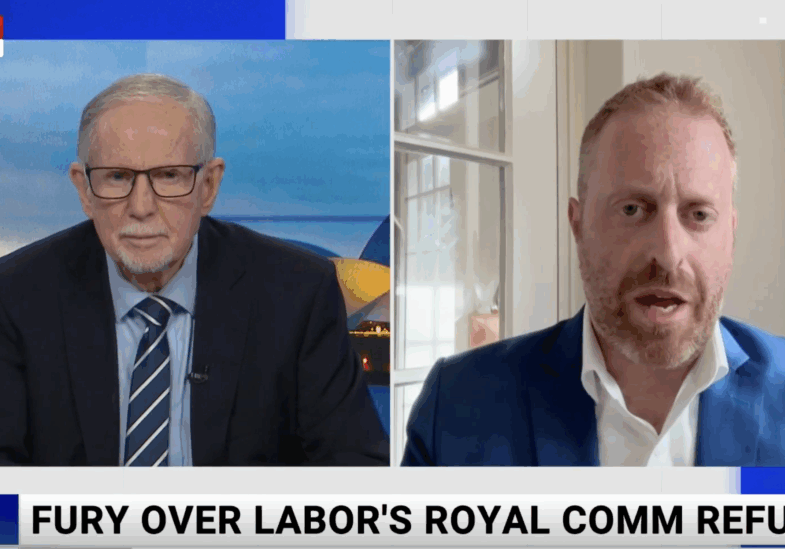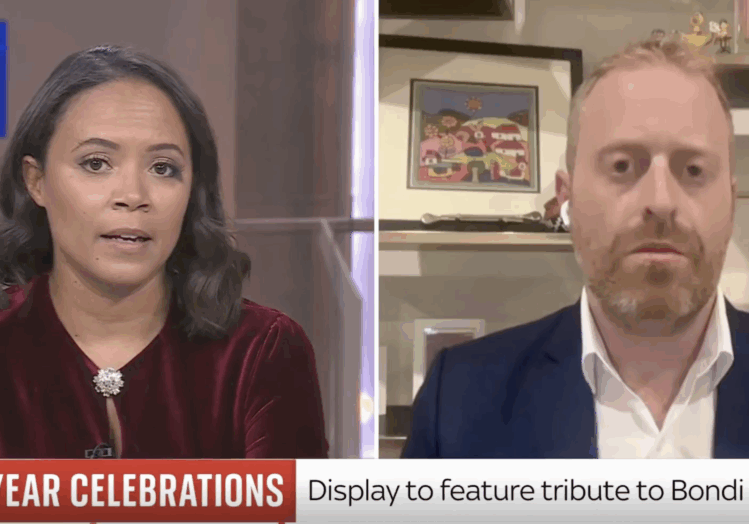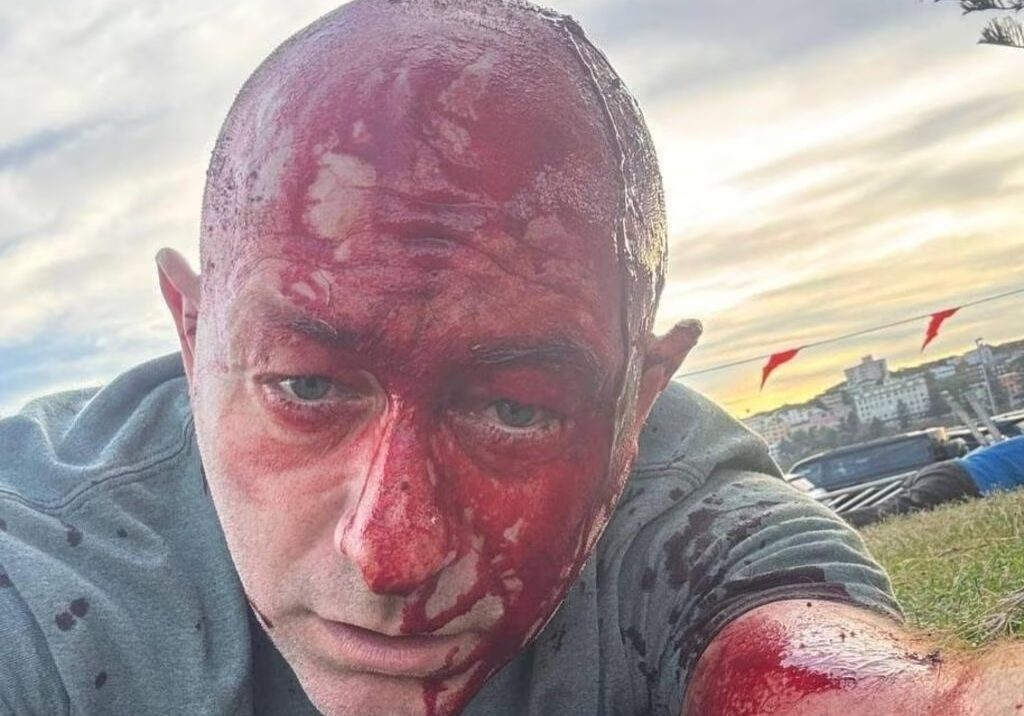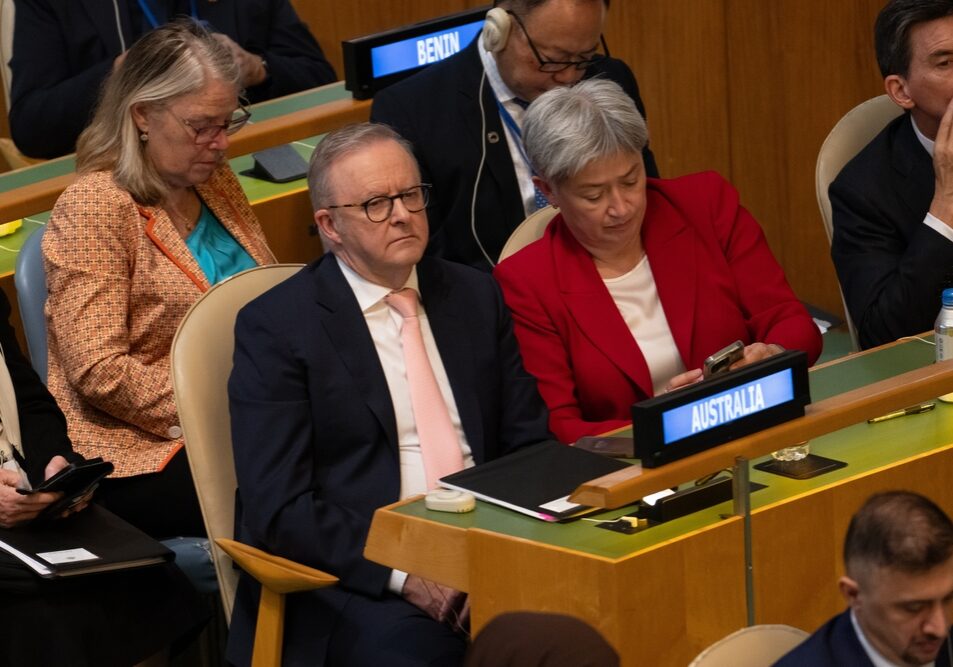Australia/Israel Review
A Sheikh’s Travels
May 5, 2020 | Ran Porat

Sheikh Taj el-Din al-Hilaly, a senior Australian Sunni cleric and a former Mufti of Australia, recently travelled to Lebanon and met with two leaders of political movements with ties to terror organisations. His encounters in Lebanon – unnoticed by the Australian public until now – provide fresh evidence of the continued questionable behaviour and ties of this senior Australian Muslim preacher.
Who is Sheikh Taj el-Din al-Hilaly?
Sheikh Hilaly has a chequered past, spending time in prison and appearing to openly incite racism in Australia.
Egyptian-born Hilaly arrived in Australia from Lebanon in 1982 on a tourist visa. He narrowly escaped deportation in 1988 when the then-immigration minister alleged he failed to uphold “Australian values”, but was granted residency in 1990 following strong lobbying by elements of the Australian Muslim community. In 1999 Hilaly was jailed in Egypt for smuggling, and in 2003 fined for exhibiting offensive behaviour towards NSW police officers and resisting arrest.
Hilaly has a long history of alleged antisemitism. In 1988, he told a Sydney audience that Jews have “enmity towards the human race as a whole”, and are trying to achieve world domination using “secret movements” such as communism, libertarianism and Freemasonry, as well as through sex, “espionage, treason, and economic hoarding.”
In a sermon in Lebanon in 2004, Hilaly called for Muslim youth to become martyrs by fighting Israel and praised the 2001 September 11 terror attacks against the United States as “God’s work against oppressors”, stating that “The media all over the world are controlled by Zionist fingers.”
Hilaly was removed from an Australian government consultation group in 2006 after calling the Holocaust a “Zionist lie” and labelling Israel a “cancer”.
He has also been notorious for his extreme views against homosexuals, anti-Western comments (“the biggest liars and oppressors”), and for suggesting that women in revealing clothes are like “uncovered meat” and thus bear the blame if they are raped. In 2013, he labelled Australia a “dictatorship”.
Despite being Sunni, Hilaly is an open supporter of Hezbollah, the Lebanese Shi’ite terrorist organisation which is Iran’s most important international client and proxy. He met Hassan Nasrallah, the leader of Hezbollah, in Lebanon in February 2004 and later said that he had praised Hezbollah and “its sacrifice” as a model for all “Mujahideen” (Islamic fighters) around the world.
In 2007 he was cleared of allegations that he had transferred charitable donations to Hezbollah.
A Visit to Lebanon
In mid-February this year, Hilaly paid a visit to Lebanon.
On Feb. 19 in the Lebanese city of Tripoli, Hilaly met with senior members of the Islamic Unification Movement (IUM, Arabic: Harakat al-Tawhid al-Islami), including the Secretary-General Sheikh Bilal Saeed Sha’aban, and the head of the Military Command Council (Arabic: Majliss al-Kiyadi al-Harb) Sheikh Hashem Minqara. On that occasion, Hilaly was awarded a special plaque honouring his “efforts on the road of Da‘wah” (preaching the word of Islam).
Formed in 1982 in Tripoli, the Sunni IUM was once a heavily armed militia of a thousand or more fighters, with extremely anti-Western views following the Khomeinist ideology of the Shi’ite Iranian regime.
Tony Badran, a Lebanon expert at the US-based think-tank the Foundation for Defence of Democracies (FDD), described the IUM as “an Iranian asset” backed by the Palestinian Liberation Organisation, and noted that “its leader was a regular guest in Tehran.” The IUM is part of the Islamic Action Front (Jabhat al-‘Amal al-Islami), which is a “Hezbollah- and Iran-aligned consortium of groups representing Tehran’s network in northern Lebanon” and provides a “veneer of cross-sectarian unity around Iran’s regional designs,” according to Badran.
The IUM is suspected of responsibility for at least three terror attacks in Lebanon – one in 1985 and two in 2013 – in which 68 people lost their lives and almost 500 were injured. It is listed as a terrorist organisation in the Routledge Handbook of Terrorism Research. It was heavily involved in the Lebanese civil war and in fighting against the Israeli army’s presence in Lebanon between 1988 and 2000. In 2014, the Lebanese army largely crushed the IUM militia while fighting al-Qaeda affiliated terror groups in Tripoli.
Current IUM leader Sha’aban is an enthusiastic supporter of Hezbollah and Iran. Last September, he praised two Lebanese terrorists who were trained in Iran and killed by Israeli forces in Syria while preparing to launch armed drone attacks against Israel. Sha’aban congratulated them for “the heroic operation carried out by the group of martyrs […] giving the Umma [Islamic nation] the dose of glory it needed.”
Interviewed for this story, Lebanon expert Pierre Akel, founder and Editor in Chief of the website Middle East Transparent, confirmed that Sheikh Minqara is “linked to Syrian security services.” Minqara was jailed in Syria for 15 years until he was released at the behest of Lebanese Prime Minister Najib Mikati. According to Akel, Mikati personally brought Minqara from Damascus in his car, possibly in exchange for working with Syrian intelligence services.
In 2013, a Lebanese court charged Minqara, along with two Syrians – one of whom was a Syrian intelligence officer – with responsibility for car bomb explosions outside two Sunni mosques, killing at least 47 people and injuring more than 500.
Akel also alleged that Minqara bore responsibility for the 1987 killing of dozens of Communist supporters in the Mina district conducted by IUM fighters.
Meanwhile, in the Lebanese town of Minya north of Tripoli, Hilaly visited Shi’ite Sheikh Mustafa Malas, the head of the National Solidarity Council. Malas is also a member of the Council of Ulama (Koranic scholars), a pro-Iran group made up of Lebanese Sunni and Shi’ite scholars.
Like Sha’aban and Minqara, Malas is strongly affiliated with Hezbollah and Iran, and an extreme supporter of violent struggle against Israel. “What is happening in Palestine,” Malas said in response to the US decision to move its embassy to Jerusalem in December 2017, “once again confirms that the Intifada is the only solution to the Palestinian cause, and that the resistance is the first choice of the Palestinian people.”
Malas survived a car bomb attack in October 2010 following his support of a visit to Lebanon by then Iranian President Mahmoud Ahmadinejad.
Malas also visited Teheran at least once – in February 2018.
In November 2019, Malas met with a delegation from Islamic Jihad in Lebanon (not to be confused with the Gaza-based Palestinian Islamic Jihad), a Shi’ite terror organisation responsible for several attacks, assassinations and kidnappings. Islamic Jihad in Lebanon is strongly affiliated with Hezbollah, specifically with the External Security Organisation (ESO) within Hezbollah, which is listed in Australia as a terrorist entity.
Australians meeting terrorist supporters on foreign soil are not exempt from responsibility for their actions. Taj El-Din al-Hilaly’s visit to Lebanon is yet another red flag in his notoriously controversial personal history and should not go unnoticed by the relevant authorities.
Dr. Ran Porat is a researcher at the Australian Centre for Jewish Civilisation at Monash University, a research fellow at the International Institute for Counter-Terrorism at the Interdisciplinary Centre, Herzliya Israel, and a research associate at the Future Directions International Research Institute, Western Australia.
Tags: Antisemitism, Australia, Hezbollah, Islamic Extremism, Lebanon






